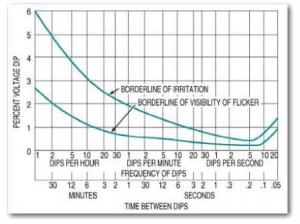
Figure 1
A wind farm integrated into a transmission grid is subject to curtailment due to temporary or long-term insufficient capacity on the transmission lines. Maintenance outage of a nearby line, dispatch of competing wind farms and availability of other generators are examples of system events that may limit injection capacity. In general, events that increase transmission utilization present potential curtailment conditions for wind farms, and so the daily and seasonal load cycles, and changes to interchange and import/export patterns can influence injection capacity as well.
In measuring the potential curtailment of a wind farm for, say, the incoming year, it is important to take into account the wind availability as well. It may seem likely that curtailment will occur when the load is highest and transmission use is greatest; however, this condition may occur in summer when wind availability is low. Hence, we have the common situation that at summer peak, the available transmission is low, but the wind capacity is also low, resulting in no or minimal curtailment. Some operating wind farms have observed that most curtailments occur in the spring and fall periods where grid use may be relatively low but wind farm capacities are high.
One approach to estimating potential wind farm curtailment is to simulate the hourly chronological performance of the combined generation and transmission system taking into account outages, unit commitment, least cost dispatch and load variations. This method is widely known as production simulation. In addition to being data intensive and laborious to setup, the simulation duration can be significant, especially if one chooses to run multiple years in a Monte Carlo simulation. This Blog presents a methodology that is based on an analytical model that is generally much simpler to develop than production simulation models and provides some unique insight into how and how often curtailments come about.
 by K. Dartawan, R. Austria
by K. Dartawan, R. Austria


 One potential impact of interconnecting distributed generation (DG) is the potential sympathetic tripping of overcurrent (OC) protection devices, where a healthy feeder trips unnecessarily for a fault on another feeder. The sympathetic tripping comes from DG with high short-circuit current contribution (typically rotating machines such as Diesel or Gas Turbine units) and can be observed in radial feeders that are fed from a common source.
One potential impact of interconnecting distributed generation (DG) is the potential sympathetic tripping of overcurrent (OC) protection devices, where a healthy feeder trips unnecessarily for a fault on another feeder. The sympathetic tripping comes from DG with high short-circuit current contribution (typically rotating machines such as Diesel or Gas Turbine units) and can be observed in radial feeders that are fed from a common source.


 A power flow that doesn’t converge is annoying, to say the least. For one, any information you try to use from a non-convergent solution is moot and questionable (recall that a
A power flow that doesn’t converge is annoying, to say the least. For one, any information you try to use from a non-convergent solution is moot and questionable (recall that a